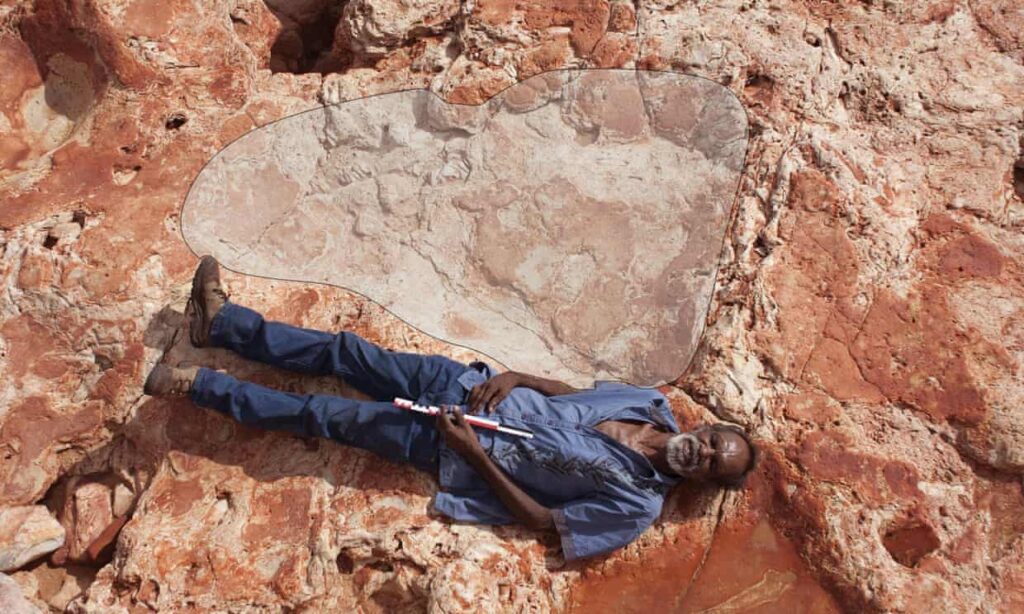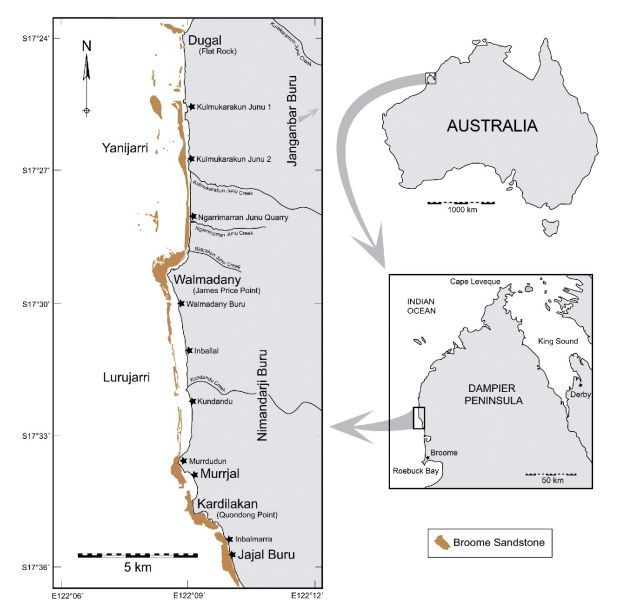Newly Discovered Human-Sized Dinosaur Footprint Is The Largest Ever Found

Australian researchers digging in the area known as “Australia’s Jurassic Park” have found the world’s biggest dinosaur footprint yet to be discovered.
According to their findings published in the Journal of Vertebrate Paleontology, the University of Queensland and James Cook University paleontologists found 20 more dinosaur footprints while digging around the Kimberly area in Western Australia.
Until now, the biggest known dinosaur footprint was a 106cm track discovered in the Mongolian desert.
At the new site, along the Kimberley shoreline in a remote region of Western Australia, paleontologists discovered a rich collection of dinosaur footprints in the sandstone rock, many of which are only visible at low tide.
The prints, belonging to about 21 different types of dinosaur, are also thought to be the most diverse collection of prints in the world.
Steve Salisbury, a vertebrate paleontologist at the University of Queensland told ABC News: “We’ve got several tracks up in that area that is about 1.7 meters long.
So most people would be able to fit inside tracks that big, and they indicate animals that are probably around 5.3 to 5.5 meters at the hip, which is enormous.”

Salisbury said the diversity of the tracks was globally unparalleled and made the area the “Cretaceous equivalent of the Serengeti”. He also dubbed it “Australia’s own Jurassic Park”.
“It is extremely significant, forming the primary record of non-avian dinosaurs in the western half the continent and providing the only glimpse of Australia’s dinosaur fauna during the first half of the early Cretaceous period,” he said.

The findings were reported in the Memoir of the Society of Vertebrate Paleontology.
“There are thousands of tracks,” said Salisbury. “Of these, 150 can confidently be assigned to 21 specific track types, representing four main groups of dinosaurs.”
The largest tracks belonged to sauropods, huge Diplodocus-like herbivores with long necks and tails.
The scientists also discovered tracks from about four different types of ornithopod dinosaurs (two-legged herbivores) and six types of armored dinosaurs, including Stegosaurs, which had not previously been seen in Australia.
At the time the prints were left, 130m years ago, the area was a large river delta and dinosaurs would have traversed wet sandy areas between surrounding forests.
The latest investigation was prompted after the region was selected as the site for a liquid natural gas processing precinct in 2008.
The area’s traditional custodians, the Goolarabooloo people, who were aware of the prints, contacted Salisbury and his team and asked them to investigate.
The scientists from Queensland University and James Cook University, along with Indigenous representatives, spent 400 hours documenting the prints.
“Dinosaur tracks have been known through that area, probably for thousands of years. They form part of the song cycle,” Salisbury said told ABC News.
“We got contacted to come in and have a closer look, and it didn’t take long for us to realize that … there was a spectacular dinosaur track fauna preserved there that was at risk.”





